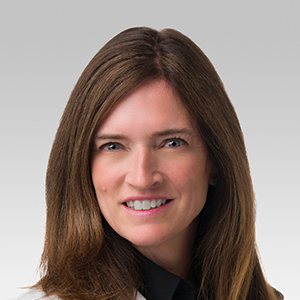What You Need to Know About Breast Cancer Screening
5 Ways to Navigate Breast Health
Updated May 2023
Breast cancer is the most common type of cancer among women* in the United States. Early detection is key to catching breast cancer when it is most treatable. Understanding your options for your own breast health can provide you with a road map to know what to do. Here are five things to know to navigate your breast health.
Mammography continues to be the best tool for detecting early breast cancer.— Sarah Maier Friedewald, MD
Screenings Save Lives
Screening with mammography is an essential part of your breast health. The American College of Radiology, The Society of Breast Imaging, The National Comprehensive Cancer Network and The American College of Obstetricians and Gynecologists recommend that women at average risk for developing breast cancer get a mammogram every year starting at age 40. However, depending on your personal or family history, your physician may recommend you start screening earlier. There are many diagnostic tools available, but many consider digital breast tomosynthesis, also known as 3-D mammography, to be the new standard of care. Research shows that by using X-ray technology, 3-D mammography provides a more detailed view of the breast tissue and fewer false positives.
“More than 43,000 women died in 2022 from invasive breast cancer, and many more are living with this disease,” says Sarah Maier Friedewald, MD, chief of Breast Imaging at Northwestern Memorial Hospital and Northwestern University Feinberg School of Medicine. “Mammography continues to be the best tool for detecting early breast cancer for most women.”
You Can Control Some Risk Factors
You cannot change your age, personal or family history, or inherited genes, but you can manage other breast cancer risk factors. Here are steps you can take to reduce your risk:
- Maintain a healthy weight
- Eat a healthy diet
- Do not use tobacco
- Limit how much alcohol you drink
- Exercise regularly to control your stress
Genetics Have an Impact
About 15% of all women diagnosed with cancer have a mother, sister or daughter who has also been diagnosed with breast cancer. Women who have close blood relatives with breast or ovarian cancer are at higher risk; with every additional family member diagnosed before menopause, this risk increases.
If this is the case in your family, consult with your physician about your prevention plan. Consider getting a baseline mammogram at least 10 years before the age your family member was diagnosed. For example, if your mother was 40, your first mammogram should be at age 30. Mammograms are not recommended before the age of 30.
Detection Is in Your Hands
You know your body best, so breast self-awareness is an important part of your health. Whether in the shower, in front of a mirror or lying down, be aware of skin changes of the breast or nipple region, lumps or swelling in the breast or armpits, nipple discoloration/discharge, or changes in the shape, size or position of your breast. Report any changes to your physician.
The best time for evaluating your breasts and to schedule a mammogram is the week after your period ends, when your breasts are more pliable.
Options for Dense Breasts
Nearly half of all women have dense breasts. Dense breast tissue can mask abnormalities on a standard digital mammogram, making screening more difficult. Dense breast tissue is also an independent risk factor for developing breast cancer. Beyond mammograms, there are additional screening options for people with dense breasts, including abbreviated breast magnetic resonance imaging (MRI) or automated breast ultrasound.
Breast health takes time to navigate, and breast cancer prevention can be a multistep journey. Your primary care physician can support you along the way and connect you with specialists in breast health to guide you through prevention and screening as well as diagnosis and treatment if needed.
*Scientists do not always collect information from participants about gender identity. To avoid misrepresenting the results of this research, we use the same terminology as the study authors.







